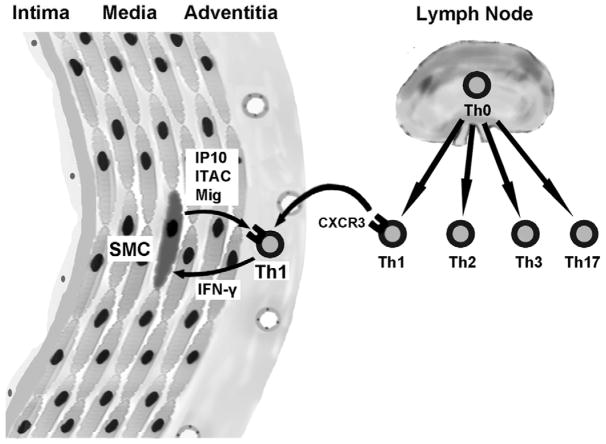Figure 1.
Schema of Th1 immune responses and the IFN-γ cytokine axis in arterial immune responses. Activation of naïve T cell precursors, or Th0 cells, occurs in draining lymph nodes of the aorta and/or peri-adventitial tertiary lymphoid organs that organize around chronically inflamed arteries. The cytokine milieau at the time of cognate recognition of antigen skews the development of CD4+ effector T cells into different lineages characterized by the polarization of secreted cytokines, viz. IFN-γ-producing Th1 cells, IL-4-producing Th2 cells, IL-10-producing Th3 cells, and IL-17-producing Th17 cells. Recirculating T cells reach the vessel wall via the luminal endothelium or from microvessels of the adventitia and occasionally outer media of the thoracic aorta. Th1 cells preferentially express the chemokine receptor, CXCR3 and their recruitment, retention, and activation is augmented by the IFN-γ-inducible CXCR3 ligands, IP-10, Mig, and ITAC that are robustly produced by vascular cells, such as medial smooth muscle cells (SMC). The positive feedback loop of IFN-γ-inducing factors, IFN-γ, and IFN-γ-inducible chemokines is referred to as the IFN-γ cytokine axis.

